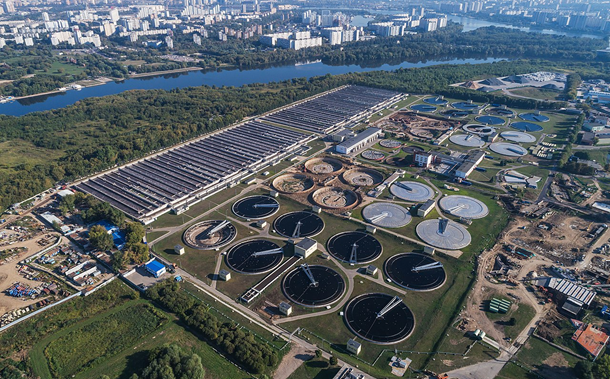Enhancing Post-Fire Performance of Lightweight RC Slabs Using Expanded Polystyrene and Steel Fibers: An Experimental Study
Downloads
Aggregate significantly influences the mechanical properties of concrete material and has a crucial role in post-fire behavior. This research focuses on investigating the post-fire behavior of a fiber-reinforced one-way slab made from lightweight expanded polystyrene (EPS) aggregate concrete. The experimental study consisted of testing fourteen fiber-reinforced self-compacting concrete (SCC) one-way slabs with EPS as a partial replacement of coarse aggregate. All specimens have identical dimensions of 1800×500×125 mm. The main parameters investigated included fire exposure, EPS replacement ratio, and steel fiber content. The tested specimens were divided into two groups. The first group included seven specimens tested under monotonic static load, whereas the seven specimens of the second group were tested under monotonic static load after being exposed to a steady-state temperature of 700°C for one hour. Following exposure to fire, results revealed a dramatic decrease in the structural performance of the slab specimens, including cracking load, ultimate load, stiffness, absorbed energy, and ductility, especially for the non-fibrous lightweight samples. However, adding EPS beads in the concrete mixture helps in reducing strength degradation due to fire exposure, and the higher the EPS content, the less strength degradation. This result exposed the positive impact of EPS on the structural performance of RC lightweight slabs exposed to fire due to their thermal properties. Moreover, results revealed a significant enhancement in post-fire stiffness, ductility, and absorbed energy of the RC slab due to steel fiber inclusion, showing their constructive impact on the slab performance.
Downloads
[1] Elango, K. S., Sanfeer, J., Gopi, R., Shalini, A., Saravanakumar, R., & Prabhu, L. (2020). Properties of light weight concrete - A state of the art review. Materials Today: Proceedings, 46, 4059–4062. doi:10.1016/j.matpr.2021.02.571.
[2] Chen, B., & Liu, J. (2008). Experimental application of mineral admixtures in lightweight concrete with high strength and workability. Construction and Building Materials, 22(6), 1108–1113. doi:10.1016/j.conbuildmat.2007.03.001.
[3] Kockal, N. U., & Ozturan, T. (2011). Strength and elastic properties of structural lightweight concretes. Materials & Design, 32(4), 2396–2403. doi:10.1016/j.matdes.2010.12.053.
[4] Ünal, O., Uygunoǧlu, T., & Yildiz, A. (2007). Investigation of properties of low-strength lightweight concrete for thermal insulation. Building and Environment, 42(2), 584–590. doi:10.1016/j.buildenv.2005.09.024.
[5] Demirboga, R., & Kan, A. (2012). Thermal conductivity and shrinkage properties of modified waste polystyrene aggregate concretes. Construction and Building Materials, 35, 730–734. doi:10.1016/j.conbuildmat.2012.04.105.
[6] Chi, J. M., Huang, R., Yang, C. C., & Chang, J. J. (2003). Effect of aggregate properties on the strength and stiffness of lightweight concrete. Cement and Concrete Composites, 25(2), 197–205. doi:10.1016/S0958-9465(02)00020-3.
[7] Lo, T. Y., Tang, W. C., & Cui, H. Z. (2007). The effects of aggregate properties on lightweight concrete. Building and Environment, 42(8), 3025–3029. doi:10.1016/j.buildenv.2005.06.031.
[8] Carsana, M., Tittarelli, F., & Bertolini, L. (2013). Use of no-fines concrete as a building material: Strength, durability properties and corrosion protection of embedded steel. Cement and Concrete Research, 48, 64–73. doi:10.1016/j.cemconres.2013.02.006.
[9] Anwar Hossain, K. M. (2008). Bond characteristics of plain and deformed bars in lightweight pumice concrete. Construction and Building Materials, 22(7), 1491–1499. doi:10.1016/j.conbuildmat.2007.03.025.
[10] Libre, N. A., Shekarchi, M., Mahoutian, M., & Soroushian, P. (2011). Mechanical properties of hybrid fiber reinforced lightweight aggregate concrete made with natural pumice. Construction and Building Materials, 25(5), 2458–2464. doi:10.1016/j.conbuildmat.2010.11.058.
[11] Gupta, T., Sharma, R. K., & Chaudhary, S. (2015). Impact resistance of concrete containing waste rubber fiber and silica fume. International Journal of Impact Engineering, 83, 76–87. doi:10.1016/j.ijimpeng.2015.05.002.
[12] Maktoof, Y. R., & Abbas, R. M. (2025). Effect of Hybrid Fibers on the Performance of Lightweight Expanded Polystyrene Self-Compacting Concrete. AIP Conference Proceedings, 3303(1), 110014. doi:10.1063/5.0261977.
[13] Ganesh Babu, K., & Saradhi Babu, D. (2004). Performance of fly ash concretes containing lightweight EPS aggregates. Cement and Concrete Composites, 26(6), 605–611. doi:10.1016/s0958-9465(03)00034-9.
[14] Sri Ravindrarajah, R., & Tuck, A. J. (1994). Properties of hardened concrete containing treated expanded polystyrene beads. Cement and Concrete Composites, 16(4), 273–277. doi:10.1016/0958-9465(94)90039-6.
[15] Adeala, A. J., & Soyem, O. B. (2020). Structural Use of Expanded Polystyrene Concrete. International Journal of Innovative Science and Research Technology, 5(6), 1131–1138. doi:10.38124/ijisrt20jun849.
[16] Cook, D. J. (1972). Expanded polystyrene beads as lightweight aggregate for concrete. School of Civil Engineering, University of New South Wales, Kensington, Australia.
[17] Bagon, C., & Frondistou-Yannas, S. (1976). Marine floating concrete made with polystyrene expanded beads. Magazine of Concrete Research, 28(97), 225–229. doi:10.1680/macr.1976.28.97.225.
[18] Prasittisopin, L., Termkhajornkit, P., & Kim, Y. H. (2022). Review of concrete with expanded polystyrene (EPS): Performance and environmental aspects. Journal of Cleaner Production, 366, 132919. doi:10.1016/j.jclepro.2022.132919.
[19] Abbas, R. M., & Fadala, W. A. (2021). Behavioral Investigation of Reinforced Concrete T-Beams with Distributed Reinforcement in the Tension Flange. E3S Web of Conferences, 318, 3010. doi:10.1051/e3sconf/202131803010.
[20] Ali, A., Soomro, Z., Iqbal, S., Bhatti, N., & Abro, A. F. (2018). Comparison of Mechanical Properties of Lightweight and Normal Weight Concretes Reinforced with Steel Fibers. Engineering, Technology & Applied Science Research, 8(2), 2741–2744. doi:10.48084/etasr.1874.
[21] Rakaa, R. K., & Abbas, R. M. (2024). Mechanical Properties of Lightweight EPS Self-compacting Concrete Reinforced with Steel Fibers. Journal of Engineering, 30(06), 125–140. doi:10.31026/j.eng.2024.06.08.
[22] Abbas, R. M., & Rakaa, R. K. (2023). Structural Performance of Lightweight Fiber Reinforced Polystyrene Aggregate Self-Compacted Concrete Beams. Engineering, Technology & Applied Science Research, 13(5), 11865-11870. doi:10.48084/etasr.6217.
[23] Shabbar, R., Al-Tameemi, A. A., & Alhassani, A. M. J. (2022). The effect of expanded polystyrene beads (EPS) on the physical and mechanical properties of aerated concrete. Open Engineering, 12(1), 424–430. doi:10.1515/eng-2022-0020.
[24] Maghfouri, M., Alimohammadi, V., Gupta, R., Saberian, M., Azarsa, P., Hashemi, M., Asadi, I., & Roychand, R. (2022). Drying shrinkage properties of expanded polystyrene (EPS) lightweight aggregate concrete: A review. Case Studies in Construction Materials, 16, 919. doi:10.1016/j.cscm.2022.e00919.
[25] Sun, Y., Li, C., You, J., Bu, C., Yu, L., Yan, Z., Liu, X., Zhang, Y., & Chen, X. (2022). An Investigation of the Properties of Expanded Polystyrene Concrete with Fibers Based on an Orthogonal Experimental Design. Materials, 15(3), 1228. doi:10.3390/ma15031228.
[26] Babu, D. S., Ganesh Babu, K., & Tiong-Huan, W. (2006). Effect of polystyrene aggregate size on strength and moisture migration characteristics of lightweight concrete. Cement and Concrete Composites, 28(6), 520–527. doi:10.1016/j.cemconcomp.2006.02.018.
[27] Vėjelis, S., & Vaitkus, S. (2006). Investigation of water absorbtion by expanded polystyrene slabs. Materials Science (Medžiagotyra), 12(2), 134-137.
[28] Asadi, I., Shafigh, P., Abu Hassan, Z. F. B., & Mahyuddin, N. B. (2018). Thermal conductivity of concrete – A review. Journal of Building Engineering, 20, 81–93. doi:10.1016/j.jobe.2018.07.002.
[29] Mohammed, H. J., & Aayeel, O. K. (2020). Flexural behavior of reinforced concrete beams containing recycled expandable polystyrene particles. Journal of Building Engineering, 32, 101805. doi:10.1016/j.jobe.2020.101805.
[30] Nemes, R., Abed, M. A., Seyam, A. M., & Lublóy, É. (2022). Behavior of structural lightweight concrete produced with expanded clay aggregate and after exposure to high temperatures. Journal of Thermal Analysis and Calorimetry, 147(15), 8111–8118. doi:10.1007/s10973-021-11167-6.
[31] Dabbaghi, F., Nasrollahpour, S., Dehestani, M., & Yousefpour, H. (2022). Optimization of Concrete Mixtures Containing Lightweight Expanded Clay Aggregates Based on Mechanical, Economical, Fire-Resistance, and Environmental Considerations. Journal of Materials in Civil Engineering, 34(2), 4021445. doi:10.1061/(asce)mt.1943-5533.0004083.
[32] Dabbaghi, F., Yang, T. Y., Tanhadoust, A., Emadi, S. B., Dehestani, M., & Yousefpour, H. (2022). Experimental and numerical investigation on post-fire seismic performance of light weight aggregate reinforced concrete beams. Engineering Structures, 268, 114791. doi:10.1016/j.engstruct.2022.114791.
[33] Abdel-Jaber, M., Al-Nsour, R., Shatarat, N., Hasan, H., & Al-zu’bi, H. (2023). Thermal Effect on the Flexural Performance of Lightweight Reinforced Concrete Beams Using Expanded Polystyrene Beads and Pozzolana Aggregate. Engineered Science, 27, 1029. doi:10.30919/es1029.
[34] Dabbaghi, F., Yang, T. Y., Tanhadoust, A., Emadi, S. B., Dehestani, M., & Yousefpour, H. (2022). Experimental and numerical investigation on post-fire seismic performance of light weight aggregate reinforced concrete beams. Engineering Structures, 268, 114791. doi:10.1016/j.engstruct.2022.114791.
[35] Martínez-Martínez, J. E., Álvarez-Rabanal, F. P., Alonso-Martínez, M., & del Coz-Díaz, J. J. (2022). Nonlinear Thermo-Structural Analysis of Lightweight Concrete and Steel Decking Composite Slabs under Fire Conditions: Numerical and Experimental Comparison. Applied Sciences (Switzerland), 12(18), 9306. doi:10.3390/app12189306.
[36] Dabbaghi, F., Dehestani, M., & Yousefpour, H. (2022). Residual mechanical properties of concrete containing lightweight expanded clay aggregate (LECA) after exposure to elevated temperatures. Structural Concrete, 23(4), 2162–2184. doi:10.1002/suco.202000821.
[37] Dabbaghi, F., Nasrollahpour, S., Dehestani, M., & Yousefpour, H. (2022). Optimization of Concrete Mixtures Containing Lightweight Expanded Clay Aggregates Based on Mechanical, Economical, Fire-Resistance, and Environmental Considerations. Journal of Materials in Civil Engineering, 34(2), 4021445. doi:10.1061/(asce)mt.1943-5533.0004083.
[38] Abdullah, A. H., & Mohammed, S. D. (2023). The Fire Effect on the Performance of Reinforced Concrete Beams with Partial Replacement of Coarse Aggregates by Expanded Clay Aggregates. Engineering, Technology & Applied Science Research, 13(6), 12220–12225. doi:10.48084/etasr.6412.
[39] Iraqi Specification No.45. (1984). Aggregate from Natural Sources for Concrete and Construction. Iraqi Organization of Standards, Baghdad, Iraq.
[40] EFNARC. (2005). Specification and Guidelines for Self-Compacting Concrete. European Federation of National Association (EFNARC), Surrey, United Kingdom.
[41] ASTM E119-14. (1992). Standard Test Methods for Fire Tests of Building Construction and Materials. ASTM International, Pennsylvania, United States. doi:10.1520/E0119-14.
[42] Kumar, R., Lakhani, R., & Kumar, A. (2022). Physico-Mechanical and Thermal Properties of Lightweight Structural Concrete with Light Expanded Clay Aggregate for Energy-Efficient Buildings. Advances in Construction Materials and Sustainable Environment. Lecture Notes in Civil Engineering, Vol. 196. Springer, Singapore. doi:10.1007/978-981-16-6557-8_14.
[43] Sayadi, A. A., Tapia, J. V., Neitzert, T. R., & Clifton, G. C. (2016). Effects of expanded polystyrene (EPS) particles on fire resistance, thermal conductivity and compressive strength of foamed concrete. Construction and Building Materials, 112, 716–724. doi:10.1016/j.conbuildmat.2016.02.218.
[44] Song, Y., Fu, C., Liang, S., Li, D., Dang, L., Sun, C., & Kong, W. (2020). Residual Shear Capacity of Reinforced Concrete Beams after Fire Exposure. KSCE Journal of Civil Engineering, 24(11), 3330–3341. doi:10.1007/s12205-020-1758-7.
[45] Zhu, J. M., Wang, X. C., Wei, D., Liu, Y. H., & Xu, B. Y. (2011). Estimation of the residual stiffness of fire-damaged concrete members. Computers, Materials & Continua, 22(3), 261–273.
[46] Mohammad, A. Q., & Abbas, R. M. (2023). Structural Behavior of Prestressed RC Dapped Beam with Openings Strengthened Using CFRP Sheets. E3S Web of Conferences, 427, 2004. doi:10.1051/e3sconf/202342702004.
[47] Sullivan, T. J., Calvi, G. M., & Priestley, M. J. N. (2004, August). Initial stiffness versus secant stiffness in displacement based design. 13th World Conference of Earthquake Engineering (WCEE), 1-6 August, 2004, Vancouver, Canada.
- Authors retain all copyrights. It is noticeable that authors will not be forced to sign any copyright transfer agreements.
- This work (including HTML and PDF Files) is licensed under a Creative Commons Attribution 4.0 International License.![]()














